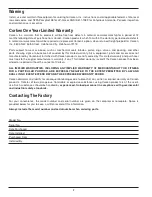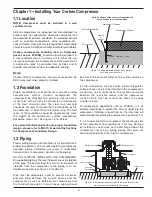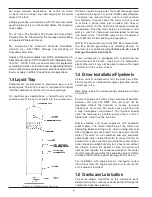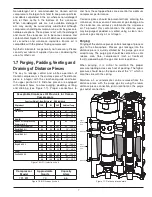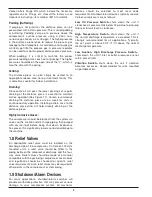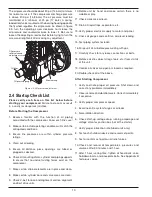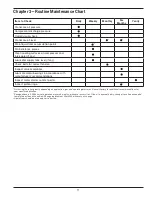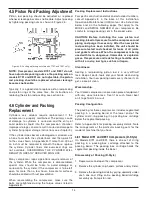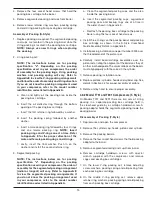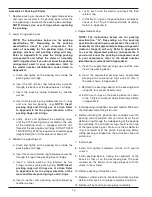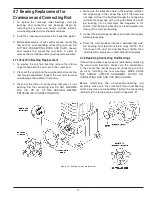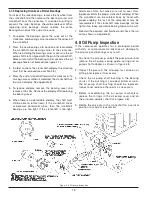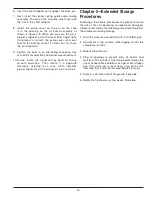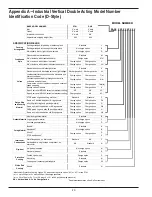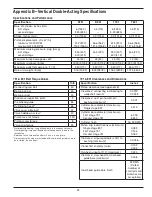
Corken offers Purge Kits which include the necessary
regulator, valves, fittings, etc. Consult the factory or see
Important Instruction, item number IE210, for details.
Padding (Buffering):
If purging is not practical, the distance piece can be
pressurized with a static pressure. This is called padding
or buffering. Padding is done at a pressure above the
compressor’s suction pressure using a clean non-
corrosive gas like dry air or nitrogen. The higher pressure
in the distance piece tends to reduce the process gas
leakage to the atmosphere. A small amount of purge gas
will likely get into the process gas. A pressure regulator
can be used to maintain proper distance piece pressure.
When padding, it is critical to maintain the proper
pressure loading across each set of packing. The higher
pressure should be on the open side of the “V”, which is
also the side with the spring.
Venting:
The distance piece can also simply be vented to an
appropriate release area, flare, or treatment facility. This
is sometimes useful for indoor installations.
Draining:
Since some oil will pass the lower packing set, regular
draining of the distance piece is essential to maintain
oil-free operation (See Figure 1.7). Corken recommends
draining the distance piece once a week for units in
continuous-duty operation. Installing a drain cock to the
distance piece drain will help simplify draining of the
distance piece.
Highly Corrosive Gases:
The compressor should be blocked from the system via
valves on the suction and discharge piping, then purged
with dry inert gas before being shut down. Experience
has proven this significantly lowers corrosion damage to
the machine.
1.8 Relief Valves
An appropriate relief valve must be installed on the
discharge side of the compressor. On Corken 107-style
mounted units, a relief valve should be fitted in the
piping between the compressor discharge and the four-
way valve. Relief valves should be made of a material
compatible with the gas being compressed. Local codes
and regulations should be checked for specific relief
valve requirements. Also, relief valves may be required at
other points in the compressor’s system piping.
1.9 Shutdown/Alarm Devices
For many applications, shutdown/alarm switches will
provide worthwhile protection that may prevent serious
damage to your compressor system. All electronic
devices should be selected to meet local code
requirements. Shutdown/alarm devices typically used on
Corken compressors are as follows:
Low Oil Pressure Switch
—shuts down the unit if
crankcase oil pressure falls below 12 psi due to oil pump
failure or low oil level in crankcase.
High Temperature Switch
—shuts down the unit if
the normal discharge temperature is exceeded. This is
strongly recommended for all applications. Typically,
the set point is about 30°F (-1°C) above the normal
discharge temperature.
Low Suction, High Discharge Pressure Switch
—
shuts down the unit if inlet or outlet pressures are not
within preset limits.
Vibration Switch
—shuts down the unit if vibration
becomes excessive. Recommended for units mounted
on portable skids.
8


